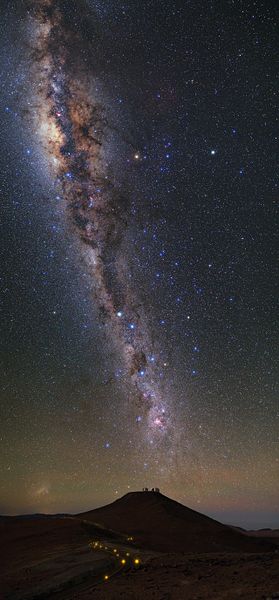Cerro Paranal


Facts and practical information
Perched high atop the Atacama Desert in Chile, Cerro Paranal is a remote mountain renowned not for its altitude but for its astronomical significance. At an elevation of 2,635 meters, this seemingly nondescript peak is home to the Paranal Observatory, one of the most advanced ground-based astronomical observatories in the world.
The observatory is operated by the European Southern Observatory (ESO) and is most famous for hosting the Very Large Telescope (VLT) array. This flagship facility consists of four Unit Telescopes, each with a primary mirror 8.2 meters in diameter, and four movable Auxiliary Telescopes with 1.8-meter mirrors. Together, they work both independently and in unison, through a technique called interferometry, which allows astronomers to observe celestial objects with unprecedented detail.
Commissioned in the late 1990s, the observatory has contributed to significant astronomical discoveries, including the first direct image of an exoplanet, the tracking of stars orbiting the Milky Way's central supermassive black hole, and the detailed study of the Universe's accelerated expansion.
The site was chosen for its exceptional atmospheric conditions: high altitude, dry air, and minimal light pollution, which create an almost perfect environment for observing the night sky. The VLT's location on Cerro Paranal offers about 300 clear nights per year, making it one of the best places on Earth for optical and infrared astronomy.
The stark beauty of the surrounding landscape, combined with the technological marvels of the observatory, has also attracted the attention of filmmakers. Cerro Paranal and the VLT provided a futuristic backdrop for the James Bond film "Quantum of Solace," further cementing its place in popular culture.
Cerro Paranal – popular in the area (distance from the attraction)
Nearby attractions include: Paranal Observatory, Next-Generation Transit Survey, Very Large Telescope, Spectro-Polarimetric High-Contrast Exoplanet Research.




